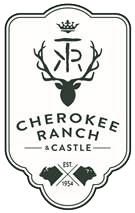Community Report
A LETTER FROM THE EXECUTIVE DIRECTOR, JAMES HOLMES
Dear Friends and Donors:
On behalf of the Cherokee Ranch & Castle Foundation (CRCF) Board of Directors, I am proud to share our Report to the Community as we evaluate our recent past and consider a bright future filled with opportunities. We are most grateful to you, our community stakeholders, as your attendance, advocacy, and financial support enables us to strive for excellence while achieving our mission. We view 2024 as a benchmark year as we are celebrating a series of important anniversaries, including the 100th year since the start of construction of the Castle, the 70th year since the establishment of the Ranch, and the 25th year since the passing of our benefactor, Tweet Kimball whose remarkable influence continues to guide the Foundation’s vision.
Notable Achievements in Stewardship and Sustainability
- Professionalization in management of the Tweet Kimball Collection
- Prioritization of Conservation of paintings and objects in the Tweet Kimball Collection
- Implementation of a USDA EQIP conservation plan for soil regeneration and rangeland management
- Advancements in genetics development as a leading Santa Gertrudis seed stock cattle breeder
- Protection of wildlife habitats and continued support of the CRCF Bluebird Nest Box Project
- Continued support of the 4-H and FFA Livestock Education Grant with the Douglas County Fair Foundation
A Community Cultural Resource Hosting Thousands Annually
- Producing cultural performances featuring traditionally favored and new performing artists
- Creating diverse and inclusive events with prominent partners, authors, and scholars
- Architectural Study of drawings of Christopher Wren featuring international speakers
- Fine Arts Study of artist Joellyn Duesberry, yielding works gifted from her estate
- Presenting the history of art and objects collections through Castle tours and events
- CRCF Science Institute ongoing researching, publishing, and providing national presentations
- Expanding access to the natural environment through public programming
Looking To The Future:
As a leading cultural and natural resources asset in Douglas County, we continue reimagining ways to ensure the sustainability of Cherokee Ranch & Castle. By embarking upon new projects in the areas of preservation of historic structures, renewable energy, and the opening of a Shona Sculpture Park in partnership with the Chapungu Sculpture Park in Zimbabwe, CRCF continues expanding programs serving diverse audiences of all ages. Exemplary cultural, scientific, heritage, and land-based programs, which are supported by the Scientific and Cultural Facilities District (SCFD) and other partners, will continue reaching new audiences.
The work of our volunteer committees remains essential to our success; the CRCF Science Institute will continue to share its research through regional and national presentations, and the Heritage Committee will focus on managing the archives and art conservation projects.
The Foundation is strengthened by adding more diverse directors and plans for a capital campaign to enhance fundraising in support of ambitious goals are being implemented. We are resolute in our belief that many new and creative ways to activate the Cherokee Ranch homesteads can be developed to support our vision for a modernized ranch operation, an agriculture-based education center, and a welcome center to include the Tweet Kimball archives.
We invite you to join us in creating a bright future for Cherokee Ranch through your financial contributions, volunteer service, and patronage in support of our goals and objectives. Thank you for your consideration and ongoing support. Together, we will realize Tweet Kimball’s stated dream that Cherokee Ranch will remain in perpetuity for all to enjoy.
Expressed with gratitude,
James A. Holmes, Executive Director

